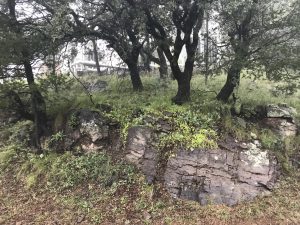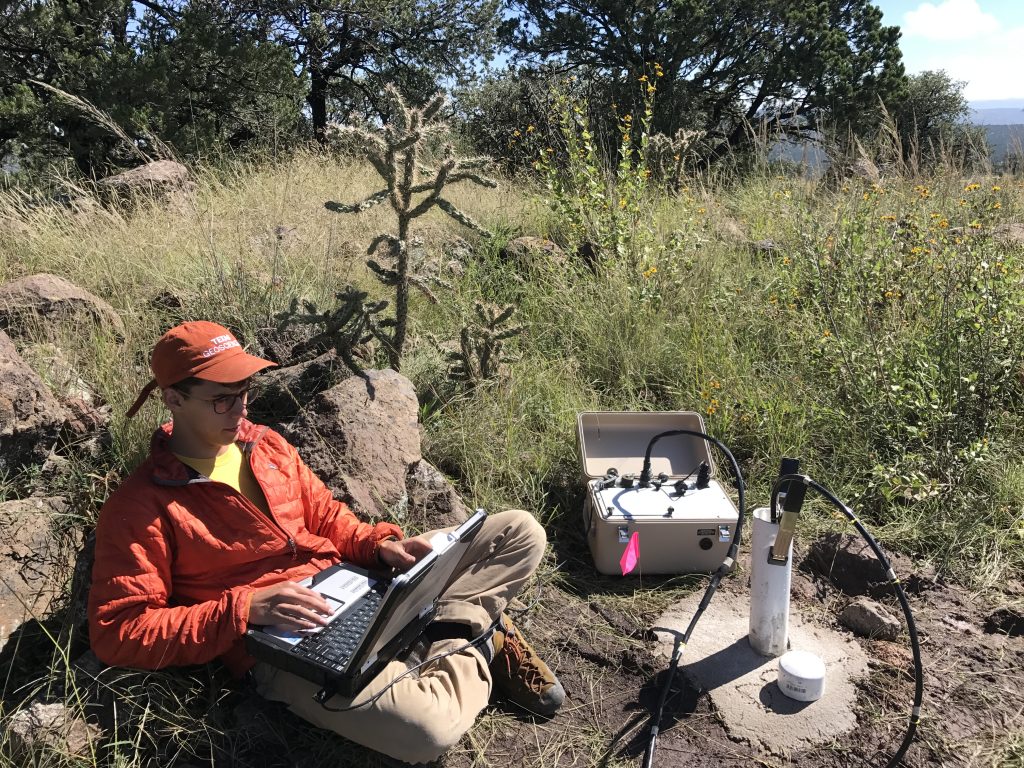
Trees near the McDonald Observatory seem to thrive despite growing almost directly upon bedrock. The Rempe Lab is investigating the hydrologic properties of such shallow bedrock and how they might influence vegitation
September 2017
L. Schmidt
In some places, thin soils mean that many plants must take root in in the fractures of shallow bedrock. Compared to soils—which are comparatively easy to access and measure—the moisture dynamics of near-surface bedrock are poorly understood. This means that we don’t understand how plants rooted in bedrock are supported by bedrock. For instance, how do plants access water in shallow bedrock, and when is that water accessible? How much water is actually stored in the bedrock anyways, and where is it stored, and for how long?
The Davis Mountains near Fort Davis, Texas provide an opportunity to study these fundamental questions about rock moisture. Here on Mt. Fowlkes among the telescopes of the McDonald Observatory, very little soil has developed to mantle the underlying volcanic bedrock, yet trees grow everywhere! How do the rocks which compose the Davis Mountains interact with the climate and ecosystem to create the stunning West Texas landscape we see today?
With generous help from Sarah Doelger (UNAVCO), Craig Nance (Mcdonald Observatory), Burke O Fort (Center for Space Research) and Clark Wilson and Chris Linick (Jackson School), the Rempe Lab has the opportunity to investigate these exciting question. Early in October 2017, two 8 meter deep, 3 inch diameter boreholes were drilled on the peak of Mt. Fowlkes. Using nuclear geophysical instruments in these holes, the Rempe Lab will measure the amount of water held in the subsurface at close delpth intervals. Without holes drilled into the surface, the kinds of data we will collect would otherwise be nearly impossible to obtain. Therefore, the results of these well-logs will represent a large step forward in our understanding of rock-water-plant interactions.

Graduate student Logan Schmidt sits near one of two newly-drilled wells. He is operating a downhole nuclear magnetic resonance probe which directly measures both the quantity of water in rock and the size of the pores in which it is held.
This work will tie in to an ongoing larger rock moisture study conducted by the Rempe Lab in Northern California where forests are rooted in metamorphosed marine sedimentary hillslopes—a starkly different lithology than the extrusive igneous geology of the Davis Mountains. Together, these projects allow us to compare how very different subsurface conditions shape their respective landscapes, and, perhaps, we may discover something fundamental about how the very closest rock influences the surfaces of the world.
© 2024 Jackson School of Geosciences, The University of Texas at Austin

